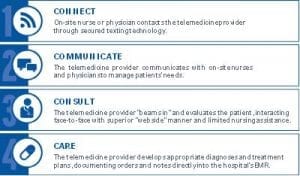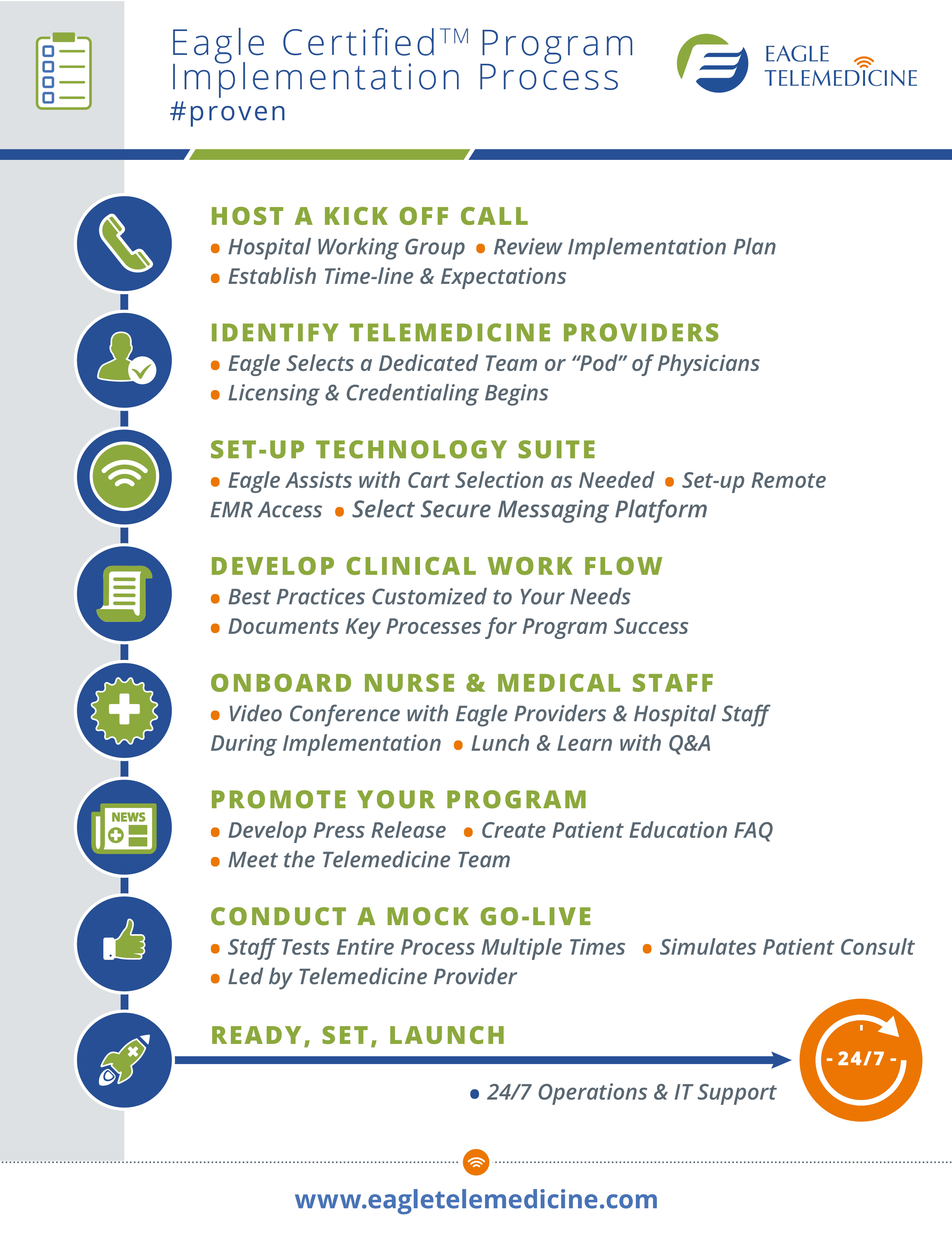If you’ve decided that the use of telemedicine will improve the care at your hospital, you may want to consider who is implementing the program to be certain that the remote care works well with your current clinical workflow. Your team has decided that telemedicine solution is the right strategy for meeting the specific and unique needs of your hospital. Now that you’ve accomplished the “what,” it’s time to talk about the “how.” Enter Phase Two: implementation. Having completed hundreds of implementations in a wide variety of specialties, we have created a replicable playbook that enables rapid start-up and clear, concise monitoring on a go-forward basis. Rest easy, you are in good hands with the Eagle Telemedicine operations team!
In this blog series, we are going to walk through our proven and replicable implementation process for the use of telemedicine in your hospital. This process allows your hospital to receive the best in technology-enabled inpatient telemedicine. Once the program starts, you will have all of Eagle’s proprietary elements that drive a successful telemedicine program. Connect, communicate, consult and care is what it’s all about.

At the beginning of the implementation process, you will receive an introduction to our operations team as well as the team lead for the project. The operations team lead will serve as your primary point of contact moving forward, and will be dedicated to ensure success of the implementation at your hospital, as well as the ongoing support and monitoring of the program and the use of telemedicine at your hospital.
The first element to any successful implementation is the kick-off call. The Eagle team will work with your hospital to schedule an hour-long call where we will review the timeline of an implementation; highlight the six elements critical to success; briefly discuss best practices; and answer any questions the team may have. It is important that there are leaders from administration, the physician team, nursing, IT, and the medical office staff participating on the call, as we will review important information pertinent to each team. Eagle will provide a presentation, as well as a project plan, for everyone to follow along with.
Implement Telemedicine the Easy Way
Due to what can feel like an avalanche of tasks to be completed, the implementation process often creates the most anxiety but have no fear. We’re here to help. Once implementation is complete, your new telemedicine program will ease the stress of night coverage, patient transfers and the shortage of specialists.

6 elements to that lead to the successful implementation and use of telemedicine that will be reviewed on the call are:
- Licensing and credentialing
- Technology suite setup
- Workflow development
- Marketing support
- Mock go-live
- Go-live
Over the course of many implementations and monitoring of the use of telemedicine, we have developed best practices and methodologies for addressing each of these elements. We will review with you what each one entails; key players in completing each piece; and will discuss best practices related to each. The Eagle team will also review a typical timeline for implementation and which elements tend to be the limiting factor to go-live.
After we have gone through the six elements of an implementation, we will open it up to the team for any questions or comments. There will be both operational and clinical representation from Eagle on the call, so the hospital teams are able to ask any and all questions related to implementation. Once all questions have been answered, we will discuss next steps, which include setting up weekly implementation calls.
In Part 2 of this series, Implementing Real-Time Telemedicine Begins, we will detail what the weekly calls entail and how they lead to successful implementations.
Skip ahead to part 3 of this blog series, Telemed Services Mock Go-Live or part 4 of this blog series, Launch Telehealth Coverage.






